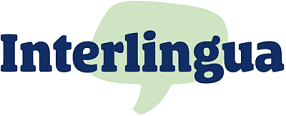Plain Language
Plain language – we make your content accessible and easy to understand
Reading is very important for getting new information.
But many texts are written in a complicated way.
This means that some people cannot understand them very well.
This includes, for example, people with learning difficulties.
How can we make texts understandable for everyone?
With plain language!
Plain language – we make your content accessible and easy to understand
Reading is very important for getting new information.
But many texts are written in a complicated way.
This means that some people cannot understand them very well.
This includes, for example, people with learning difficulties.
How can we make texts understandable for everyone?
With plain language!


What is plain language?
Our introduction says it all: the aim of plain language is to make content accessible and easy to understand and to enable unhindered participation in our information society. Various media companies and public bodies are already setting a good example by offering news articles, informational materials or brochures in plain language.
Our experts can translate your documents according to the rules of plain language for target groups including the following:
- People with learning difficulties or cognitive impairments
- Older people or those with dementia
- People with a low level of English
- People with reading and writing difficulties
What are the rules for using plain language?
We adhere to the rules of the European advocacy group for people with impairments, Inclusion Europe, and to generally accepted rules in English-speaking countries.
We therefore replace technical terms and foreign words with familiar expressions and simplify complicated sentence constructions (e.g. by keeping things short, using active sentences, and avoiding both the subjunctive mood and figurative language). In addition, we can advise you on the structure, format and layout of your text (it is important, for example, to use colours correctly, to leave a generous amount of space between lines or to have clearly visible headings).
How does Interlingua go about translating into plain, easy-to-read language?
First, we work with you to determine who your target group is, check your source text and draw up a plan for how to process it. Since the language level of these groups is very diverse, we normally draw on language levels A1 to B1 of the European Framework of Reference.
- A1: Can understand and use familiar everyday expressions and very simple phrases aimed at satisfying specific needs.
- A2: Can understand sentences and frequently used expressions connected to highly relevant topics.
- B1: Can understand the main points when clear standard language is used and when dealing with familiar topics connected to work, school, leisure, etc.
With Interlingua, you can transform your texts from the source language into plain language or translate them into a specific foreign language. Currently, we can translate your texts into easy-to-read German, English, French, Spanish and Italian.
Frequently Asked Questions (FAQ)
Translations into plain language should remain as close a possible to the original text in terms of their structure, context and function. There can, however, be some changes: normally, additional explanations and examples are added. The order of certain pieces of information can be changed, as long as this helps the reader understand the text. It is possible to discuss in advance which terms and elements must be kept or explained.
As a rule, texts in plain language are longer because technical terms in particular have to be explained and the layout needs to be changed using features such as a larger font and more space between the lines. In the case of images, it is also important that they match the content and convey a clear message.
Plain language is suitable for almost any subject area. Typically, texts in the areas of health, social affairs, education, administration and law are translated into plain language.
